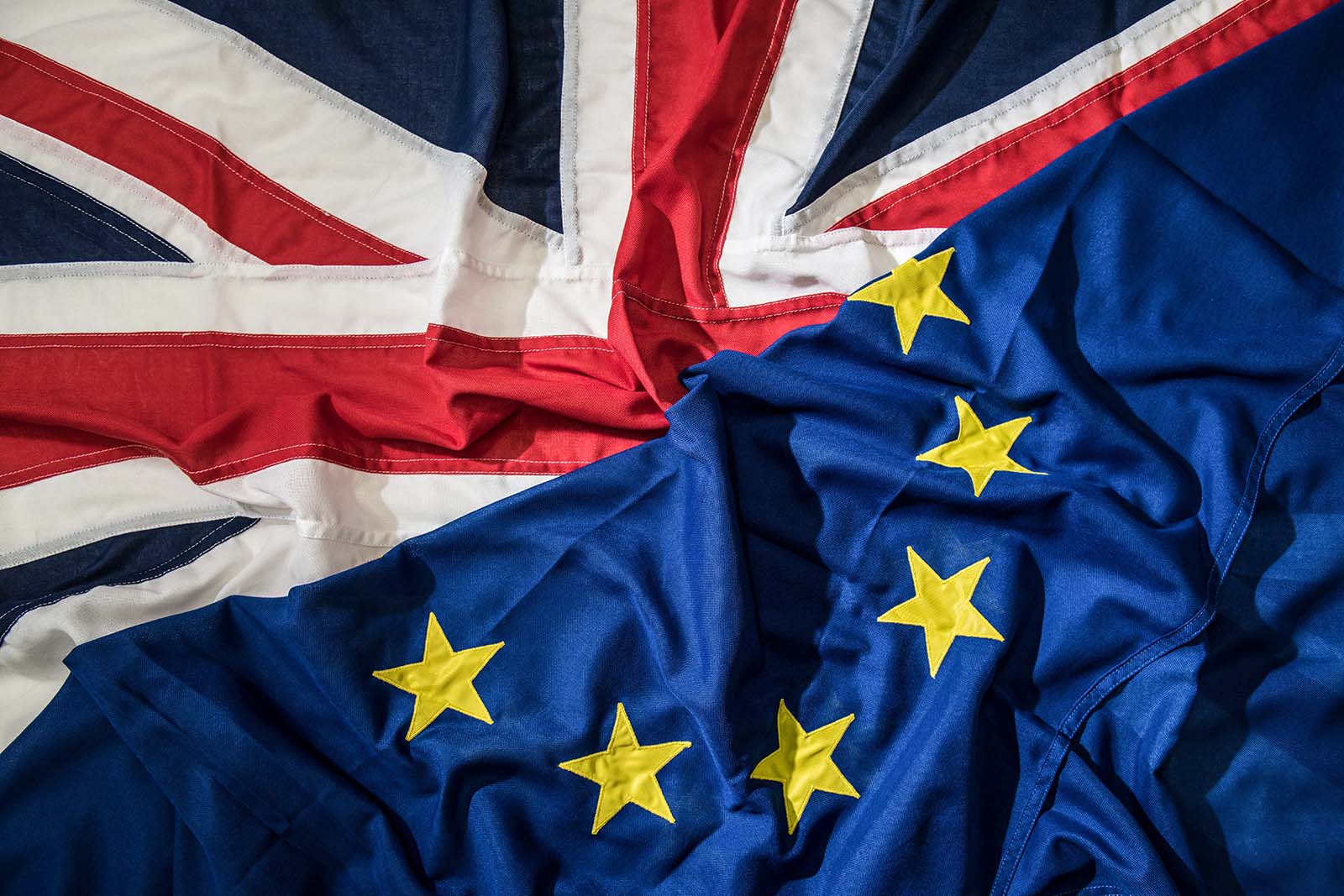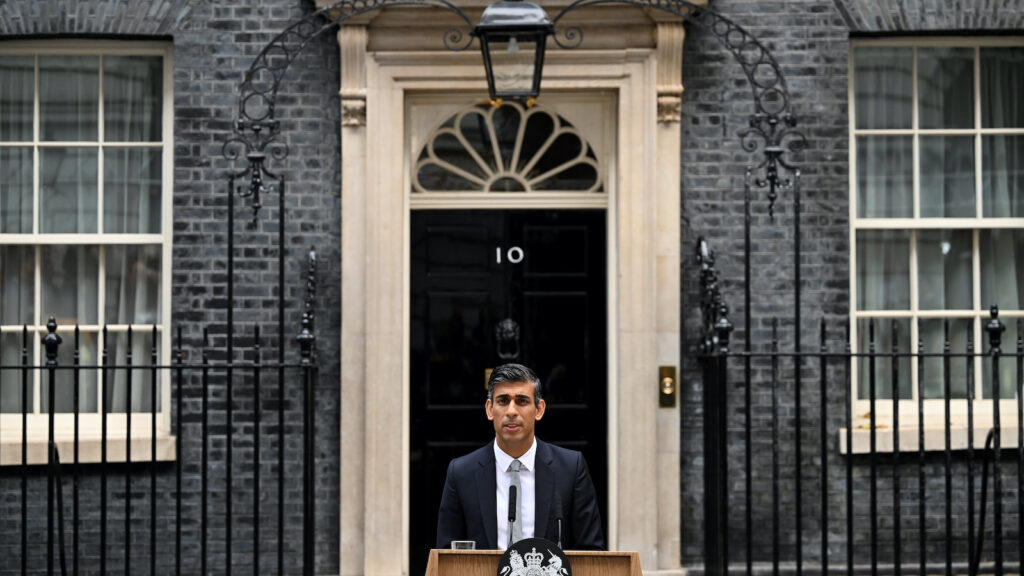Peering Over the Precipice: Implications of a ‘Cliff Edge Brexit’

A ‘hard’ Brexit will present major challenges to UK businesses, there are also opportunities.
Photo: Oli Scarff/AFP/Getty Images
While both the UK and EU will endeavor to reach a deal to allow for a smooth exit for the UK from the bloc in 2019, the slow progress made in negotiations so far—and the sometimes fractious relations between the two sides—makes the UK’s exit from the bloc with no deal in place, a so-called “cliff edge Brexit”—a very possible scenario.
The “phase one” talks deal brokered on December 7 and 8, while showing that some progress in negotiations is possible, presents some notable contradictions that could still pave the way for a cliff edge Brexit. The part of the deal relating to the future of the Northern Ireland-Republic of Ireland border states that the deal will preserve the integrity of the UK’s internal market (i.e., no divergence between Brexit for Northern Ireland and Brexit for the rest of the UK), avoid a “hard border” (an undefined term) on the island of Ireland, and preserve the Good Friday Agreement of 1998.
To achieve these three objectives seems impossible if the UK seeks to leave the single market and customs union, given it would be impossible for the UK internal market to remain in place and for there to be no customs checks on the Irish border. This depends on the UK government remaining committed to the plans to leave the single market set out in two major speeches delivered by Prime Minister Theresa May in London and Florence in 2017.
It is likely that the UK and the EU will agree on a UK exit deal by the deadline for the UK to leave the EU in March 2019. Although it’s expected that the UK will eventually leave the single market (a so-called “hard Brexit”), such an exit would happen under an agreed transition period of around two years, starting in March 2019, which temporarily retains aspects of single market membership for the UK.
While this hard Brexit will present major challenges to UK businesses, there are also opportunities. The impact of a cliff edge Brexit on UK businesses when compared to the hard Brexit scenario described above in the short-to-medium term, is the emphasis here. These impacts are overwhelmingly negative given that it would always be in the interests of UK businesses for the UK to have negotiated an exit deal, no matter how “hard,” rather than crash out of the EU with minimal preparation in March 2019.
Shock of Cliff Edge Would Push Economy Into Recession
A cliff edge scenario in which the UK leaves the EU in 2019 without a transitional arrangement or future trade deal in place and falls back on WTO tariff schedules would lead to a contraction of real GDP, a longer lasting drag on economic activity, and a longer period of adjustment before any potential upsides from Brexit accrue to the economy.
The main channels through which growth would be negatively impacted would be a weaker pound, rising inflation, falling real income and consumption growth, a loss of export market share, and disinvestment as firms relocate or scale back UK operations.
The UK economy would suffer at least one quarter of contraction in the cliff edge scenario, likely in late 2018 to early 2019, proceeded by a more sluggish rebound through 2021. While Brexit offers potential upsides as well as downsides with regard to long-term growth, the disruptive nature of the “no deal” scenario implies a longer lasting drag on economic activity and a longer adjustment period before any potential upsides can accrue.
Cliff Edge Would Impact UK Industries Through Five Main Channels
When analyzing the impact of various Brexit scenarios on UK industry, it’s useful to group the impacts into five main channels: weaker domestic demand, investment cutbacks, cost increases due to lower immigration and more expensive imports, weaker exports and EU funding cuts.
1. Weaker Domestic Demand: Industries exposed to lower household spending would see revenues squeezed by the broad economic weakness that would follow a cliff edge. Household spending would retrench, particularly on discretionary (e.g., fashion) and big-ticket durable goods (e.g., autos, household appliances). Leisure and hospitality would suffer from weaker household spending on these categories, although this would be partially offset by a weaker pound encouraging more foreign and domestic tourism in the UK.
2. Investment Cutbacks: A proportion of both domestic and foreign firms invested in the UK would enact contingency plans to move facilities out of the country. Financial services firms would be particularly likely to do so given the relatively low expense of opening offices in EU countries in order to circumvent new UK-EU customs and the loss of UK passporting rights. In contrast, manufacturing firms including autos and pharmaceuticals would be slower to relocate investment out of the UK given the substantial cost of relocating manufacturing facilities.
3. Cost Increases: Firms operating in the UK would be exposed to higher costs from labor and import prices. With regard to labor costs, lower net migration from the EU would tighten the already tight labor market, particularly in industries with high existing EU migrant worker stocks including agribusiness, construction, retail and leisure/hospitality. Even if the UK government maintained low barriers for EU citizens to enter and work in the UK after the cliff edge, a significant depreciation in the pound versus the euro and increased uncertainty would reduce the incentive for EU workers to do so. Regarding import costs, the combination a weakening pound and new customs requirements on UK-EU trade would significantly raise costs for UK businesses importing final goods (e.g., retail) or components (e.g., autos) from the EU.
4. Weaker Exports: Once the UK crashed out of the single market, all UK exports (including to both EU and non-EU countries) would be subject to WTO tariff rates, which are, on average, higher than current tariff rates, particularly compared to tariff-free access to the EU market. We estimate the average weighted tariffs on UK exports to the EU would rise from zero to 3.3 percent. Of the major UK export categories to the EU, autos (8.4 percent), plastics (5.6 percent), agribusiness (variable, but up to 74 percent) and textile products (11.5 percent) would face the steepest tariffs. For the top ten non-EU trading partners, average tariffs would rise from 3.1 percent to 4.7 percent, with the most significant increase applying to Turkey (2.7 percent to 10.8 percent).
5. EU Funding Cuts: A cliff edge would have limited immediate funding impact on industries that currently receive a substantial amount of EU funding. This is because the UK Treasury has previously promised to meet any EU funding shortfall that results from Brexit until at least 2020. This would prevent an immediate funding impact on agriculture, university research and infrastructure, for example. Although the longer-term funding outlook would be less certain, this would also be the case under a negotiated Brexit and is thus not specific to the cliff edge scenario.
EU Does Not Emerge Unscathed From Cliff Edge Brexit
Given that the European Commission’s negotiating stance has been rigid, with its overriding objective of ensuring the coherence of the single market, it could be said that the EU is unintentionally pushing the UK toward a cliff edge Brexit. For the member states of the EU, this would be the worst possible outcome. Their immediate concern would be for those EU citizens living in the UK.
Around 3.7 million individuals living in the UK are citizens of another EU country, and with no deal in place, there would be no provision for their continued right to live and work in the country. Poland is the country with by far the most citizens living in the UK, with an estimated 1 million Poles making a living in the country, ahead of Romania with around 350,000 and Italy with 275,000. The Republic of Ireland has around 370,000 citizens living in the UK, but their residency would likely come under the Common Travel Area established between the two countries in 1923.
On a broader note, not agreeing to a deal with the UK would undoubtedly be viewed as a failure of the commission by the member states. The likely negative fallout from a cliff edge Brexit could discourage other countries with strong euroskeptic movements from seeking to leave the bloc. However, it would also act as an indicator that the institutions of the EU are more interested in preserving their key tenets and ideals rather than working toward a deal that would lessen the blow of the UK leaving on its member states, providing more fuel for anti-EU parties and movements across the EU.




